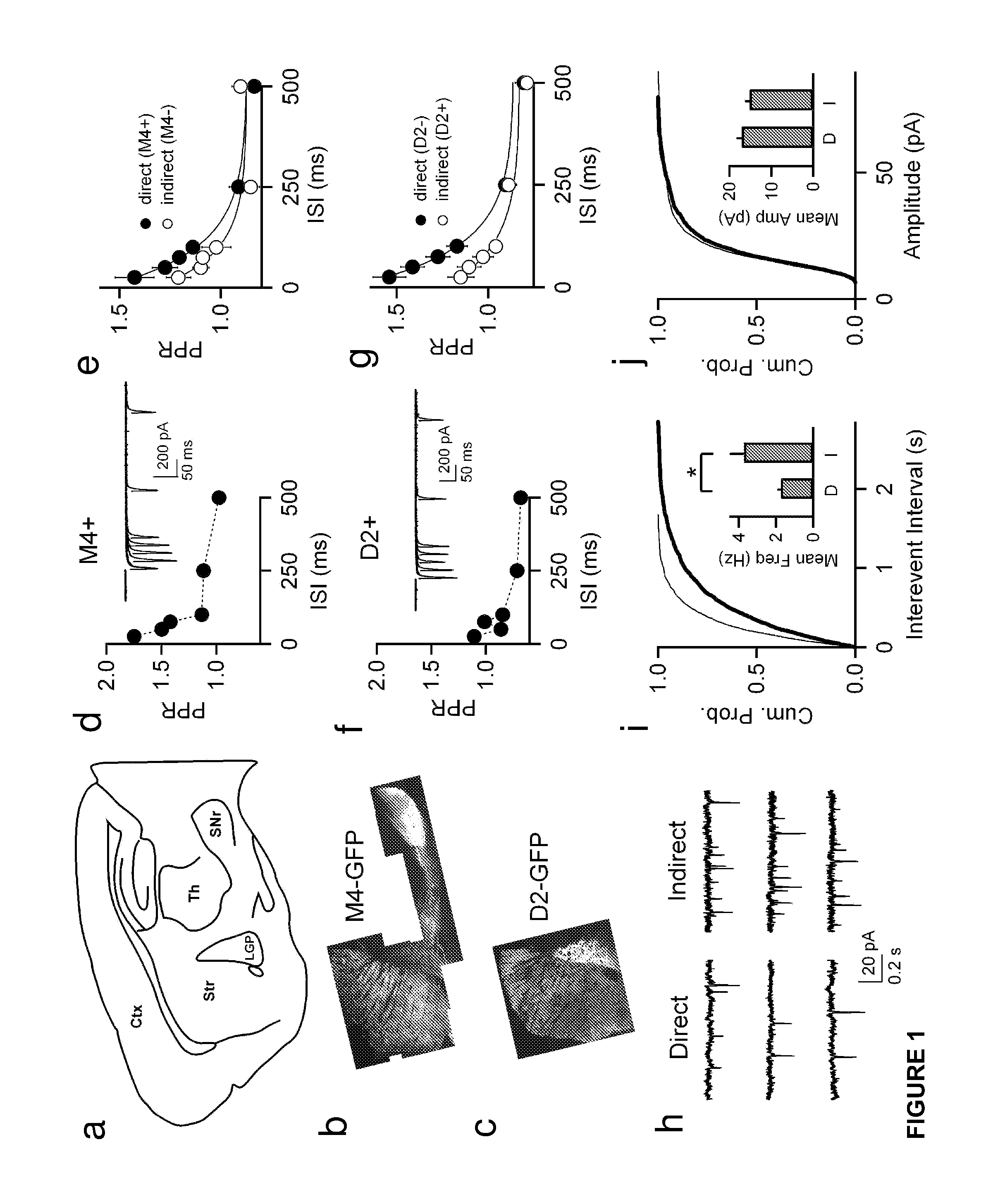Treatment of brain disorders of the striatum
a brain disorder and striatum technology, applied in the direction of biocide, drug composition, nervous disorder, etc., can solve the problems of insufficient endocannabinoid release, insufficient strong depolarization alone, and inability to determine the actual role of endocannabinoids, so as to reduce the associated motor deficits
- Summary
- Abstract
- Description
- Claims
- Application Information
AI Technical Summary
Benefits of technology
Problems solved by technology
Method used
Image
Examples
Embodiment Construction
[0023]The present invention provides methods that utilize regulation of striatal indirect pathway endocannabinoid-mediated long-term depression (eCB-LTD) to improve motor deficits of striatal-based brain disorders. In particular, such methods find use in the treatment of Parkinson's disease. In one embodiment of the invention, a D2 receptor agonist is administered in conjunction with an inhibitor of endocannabinoid degradation. In some embodiments, the inhibitor of endocannabinoid degradation is a fatty acid amine hydrolase inhibitor, or a monoacylglycerol lipase antagonist. The combination provides for a synergistic effect, with improved therapeutic effects. Also provided are kits and systems for practicing the subject methods, as well as methods of use of agents identified in the screening method of the invention.
[0024]The subject methods are useful for both prophylactic and therapeutic purposes. Thus, as used herein, the term “treating” is used to refer to both prevention of dise...
PUM
| Property | Measurement | Unit |
|---|---|---|
| resting membrane potentials | aaaaa | aaaaa |
| resting membrane potentials | aaaaa | aaaaa |
| membrane potential | aaaaa | aaaaa |
Abstract
Description
Claims
Application Information
 Login to View More
Login to View More - R&D
- Intellectual Property
- Life Sciences
- Materials
- Tech Scout
- Unparalleled Data Quality
- Higher Quality Content
- 60% Fewer Hallucinations
Browse by: Latest US Patents, China's latest patents, Technical Efficacy Thesaurus, Application Domain, Technology Topic, Popular Technical Reports.
© 2025 PatSnap. All rights reserved.Legal|Privacy policy|Modern Slavery Act Transparency Statement|Sitemap|About US| Contact US: help@patsnap.com



